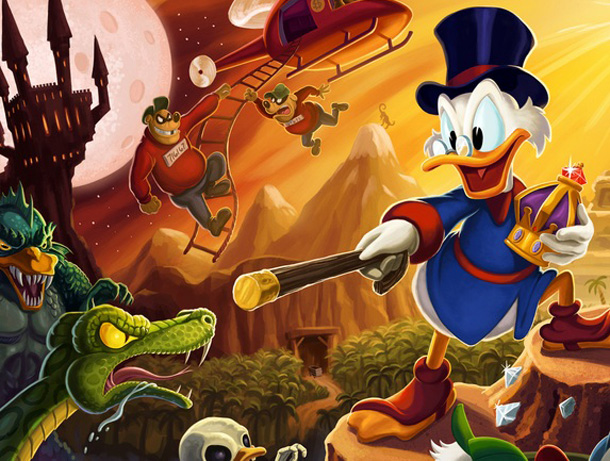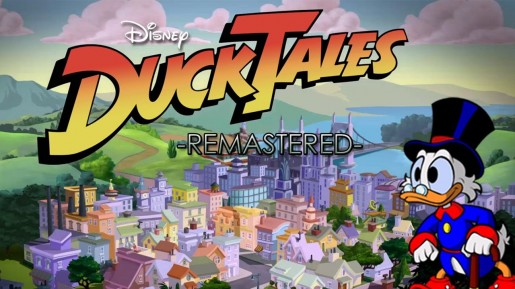When NES games are being discussed, one that seems to always come up is Capcom’s Ducktales, based on the late 1980s television series of the same name. I personally made a point to purchase a cartridge of the original when I finally got an NES a couple years ago, and it was well worth it as the game is one of the best platformers on the console. Capcom was well known for their games based on Disney properties during the 8-bit and 16-bit eras and many would argue that Ducktales was the pinnacle.
Is WayForward Technologies’ Ducktales: Remastered more like the disappointment that was Teenage Mutant Ninja Turtles: Turtles in Time Re-shelled or the very well received Bionic Commando Rearmed? Keep reading to find out as we discuss the good and bad qualities of Ducktales: Remastered.
HOT
Gorgeous Graphics
Ducktales: Remastered received a graphical makeover from the original to bring it into the HD age. The levels look very similar to the original game, but now have a fresh coat of beautiful paint. The game utilizes hand-drawn 2D sprites along with 3D levels to give a 2.5D presentation. The sprites fit in very well and while obviously updated from the original game, you can recognize pretty much every one as you play. The standout to me while playing was the backgrounds and how much they really stood out in every level of the game. It also allowed the 2D sprites to really pop to life in front of the screen, especially during the boss fights. While only in a small portion of the last level, one area that really impressed me used an art style similar to a few levels in Donkey Kong Country Returns, where everything in the foreground was shaded black, allowing the background to stand out even further.
Control Simplicity
The very tight controls in this game are almost exactly the same from the NES version, you just have the option to use an analog stick this time to move. Due to this, the control scheme is very simplistic, but for a game like this, it fits perfectly. Most of the game you will find yourself jumping around on your cane like a pogo stick. Playing the new version only one day after playing the original, I felt the controls were as effective in one as the other as I had no problems whatsoever traversing the different stages. In fact, one aspect of the controls worked better for me in this version. In the original, you could not pogo up and down in the same spot more than once without losing the pogo until you hit the buttons again, which often can lead to death or at least damage. This is essential for parts of the game where you are on a small platform with enemies approaching, but can’t move forward or backwards quite yet. It is also vital in sections where you are pogo-ing over any spiked or electrified platforms that may require you to stop in place to assess how to get past the next obstacle.
Innovative Boss Fights
Having just played through the original Ducktales, probably the most disappointing part of the original was the extremely easy boss fights. Each and every one pretty much had one pattern that you could learn in less than 15 seconds and only had to be hit with the cane five times on their head. It just seemed unsatisfying to play through a level and that be the climax. However, Ducktales: Remastered fixes this immensely with complete makeovers for the boss fights. Rather than taking less than 30 seconds on average, each fight takes a couple minutes now, and features multiple phases that you must learn. This made beating each level that much more satisfying by knowing that you made it through a tough boss and deserve the treasure you receive as a result.
New Content
I kind of expected the game to just be a remake of the existing stages from the original, but I was surprised to find out when playing that there were two completely new stages to this game. There is an opening stage set in Scrooge’s vault as well as a new final level. In the original, when you beat all five of the main stages, you would go back to one of the previous stages, Transylvania, for the final showdown with the boss. Now there is a new stage that is really fun to play. I won’t spoil what it is, so I’ll leave you to experience it yourselves, if you play the game. The additions to the remade stages are also very welcome. It allows each stage to last a little bit longer than the original. As a result, there are a lot more checkpoints throughout, which can take a little bit of the challenge out. However, there are multiple difficulty settings to offset this, with an easy, normal, and hard setting from the start, and an extreme difficulty setting that can be unlocked later.




